Physical Address
304 North Cardinal St.
Dorchester Center, MA 02124
Metatarsalgia is one of the most common pain syndromes that affects the forefoot. It is characterized by tenderness and pain over the metatarsal heads. The patient often feels that he or she is walking with a stone in his or her shoe. The pain of metatarsalgia worsens with prolonged standing or walking for long distances and is exacerbated by improperly fitting or padded shoes. Often, the patient with metatarsalgia develops hard callus formations over the heads of the second and third metatarsals as he or she tries to shift the weight off the head of the first metatarsal to relieve the pain. This callus formation increases the pressure on the metatarsal heads and further exacerbates the patient’s pain and disability ( Fig. 200.1 ). On physical examination, pain can be reproduced by pressure on the metatarsal heads ( Fig. 200.2 ). Callus formation often is present and can be distinguished from plantar warts by the lack of thrombosed blood vessels, which appear as small, dark spots through the substance of the wart when the surface is trimmed. The patient with metatarsalgia often exhibits an antalgic gait in an effort to reduce weight bearing during the static stance phase of walking. Ligamentous laxity and flattening of the transverse arch also may be present, giving the foot a splayed-out appearance.
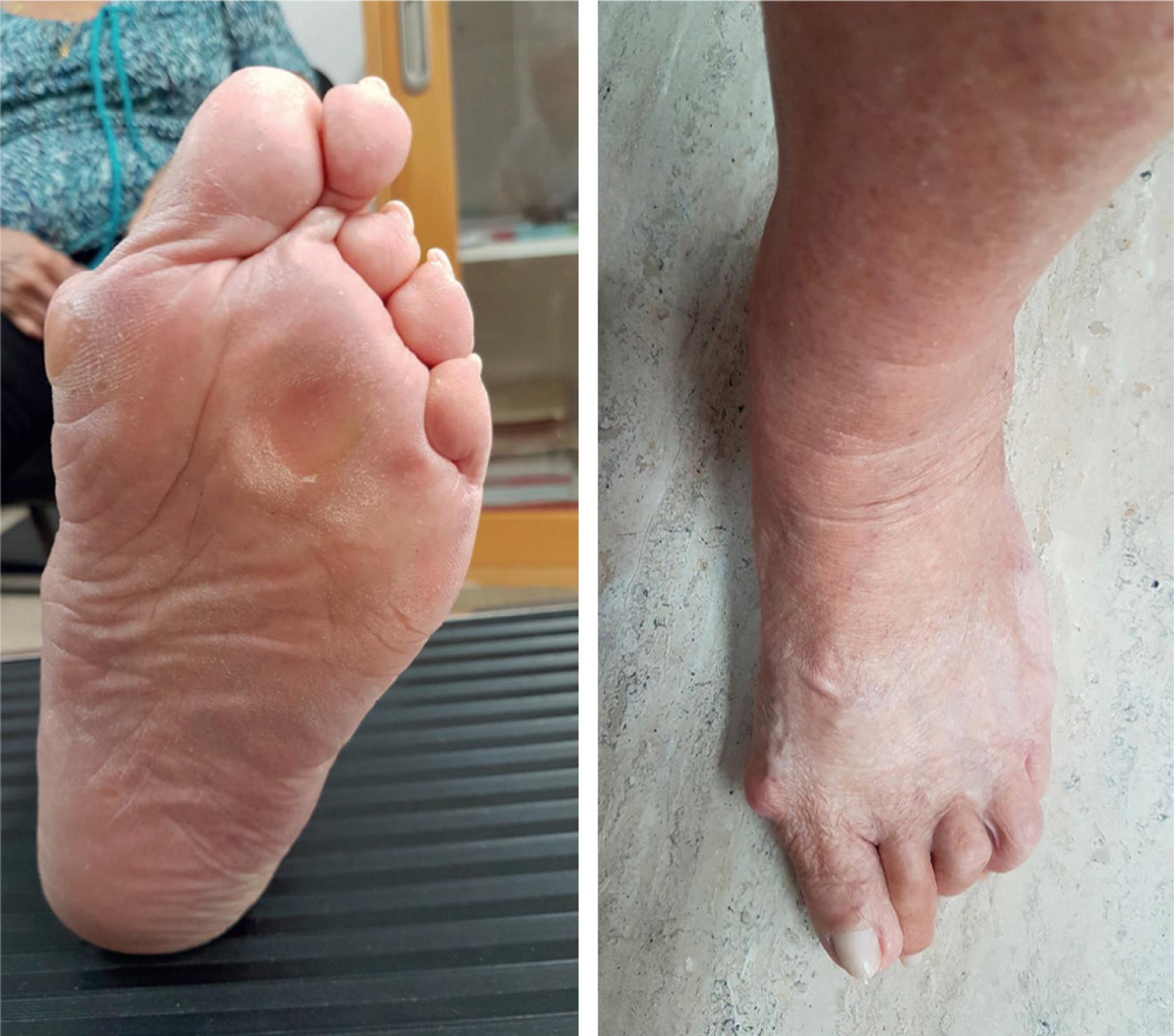
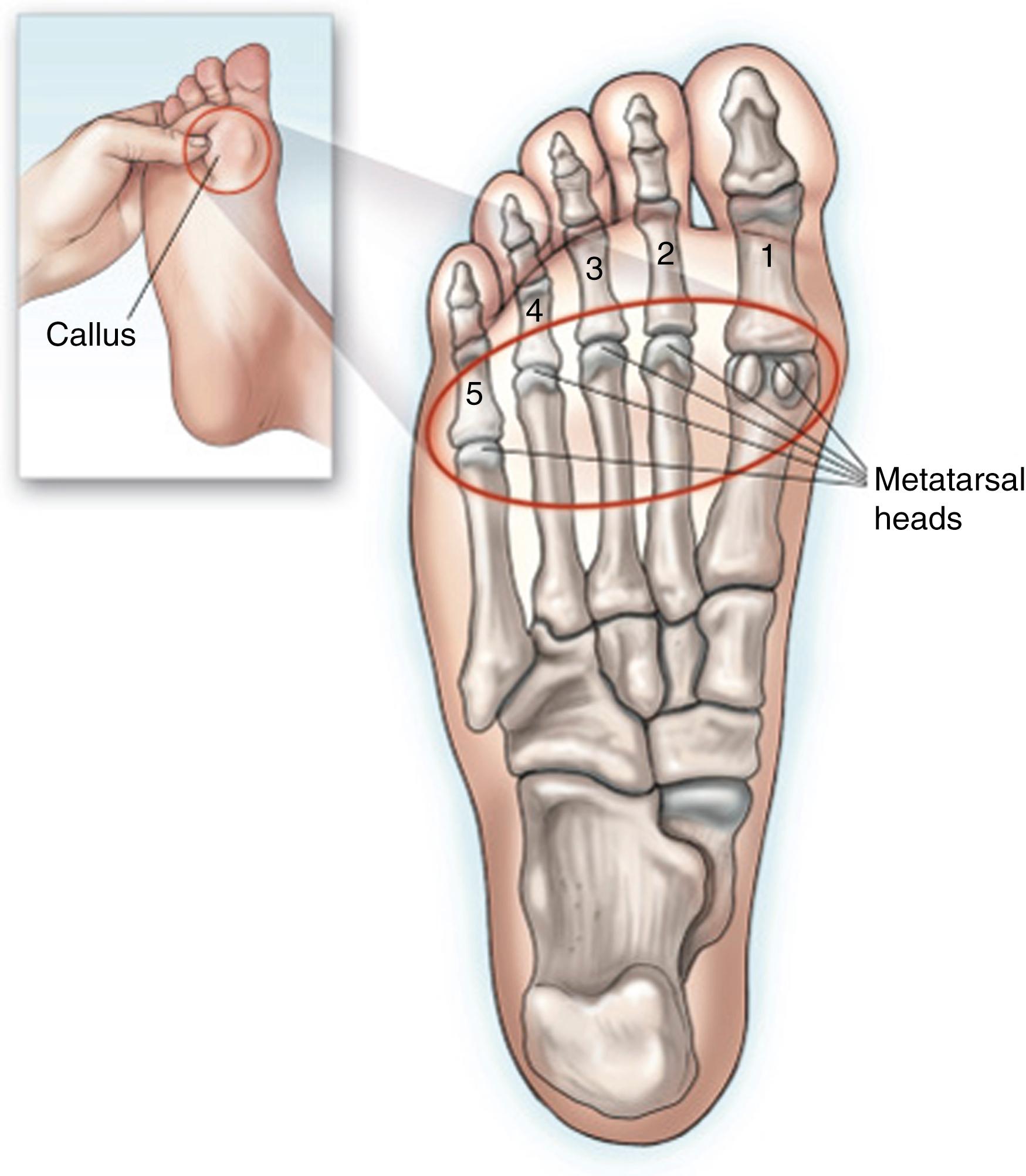
Plain radiographs are indicated for all patients with metatarsalgia to rule out fractures and arthritis and to identify sesamoid bones that may have become inflamed ( Figs. 200.3 and 200.4 ). On the basis of the patient’s clinical presentation, additional testing may be indicated, including complete blood cell count, sedimentation rate, and antinuclear antibody testing. Magnetic resonance imaging of the metatarsal bones is indicated if joint instability, fracture, plantar plate abnormality, occult mass, or tumor is suspected ( Figs. 200.5 and 200.6 ). Radionuclide bone scanning may be useful in identifying stress fractures that may be missed on plain radiographs of the foot.
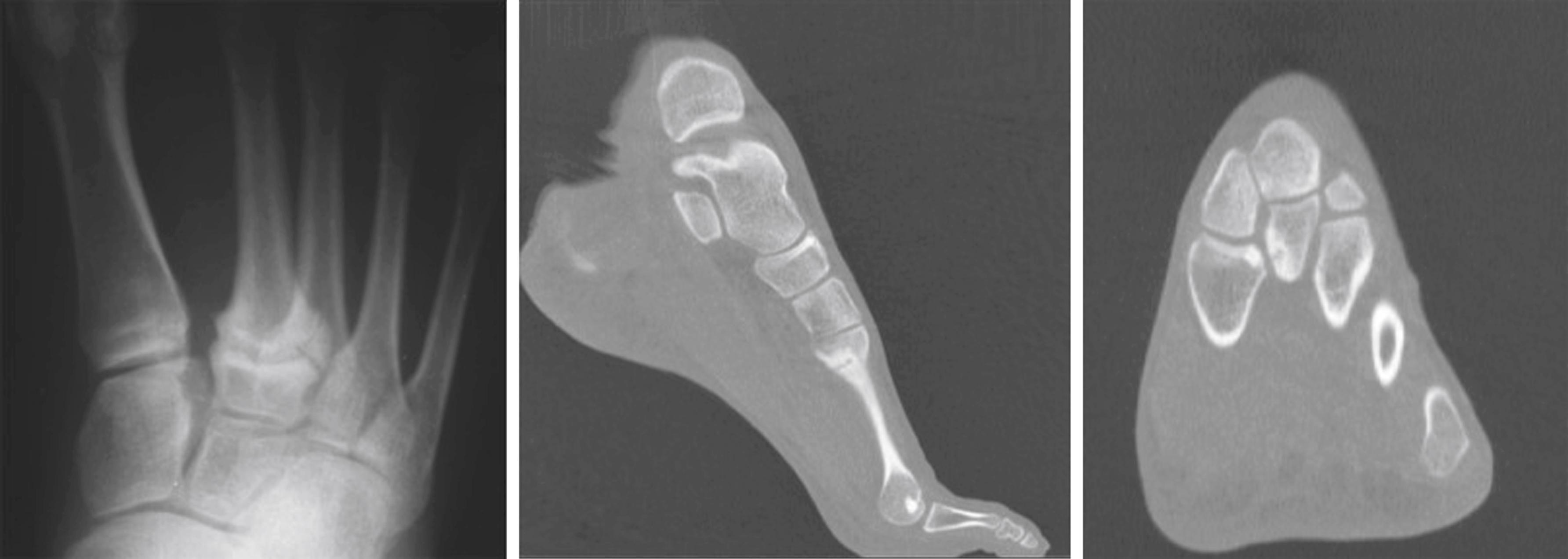
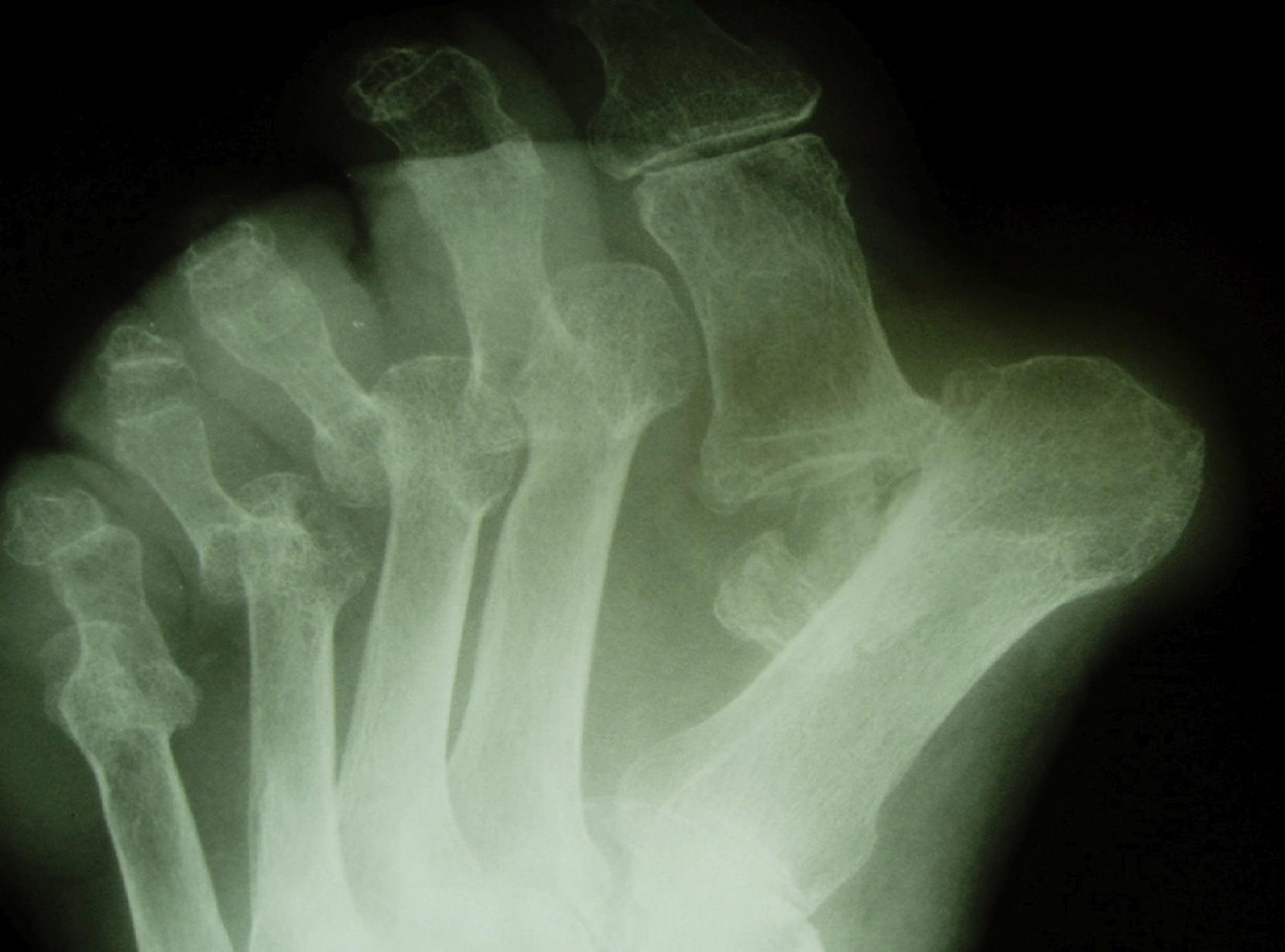
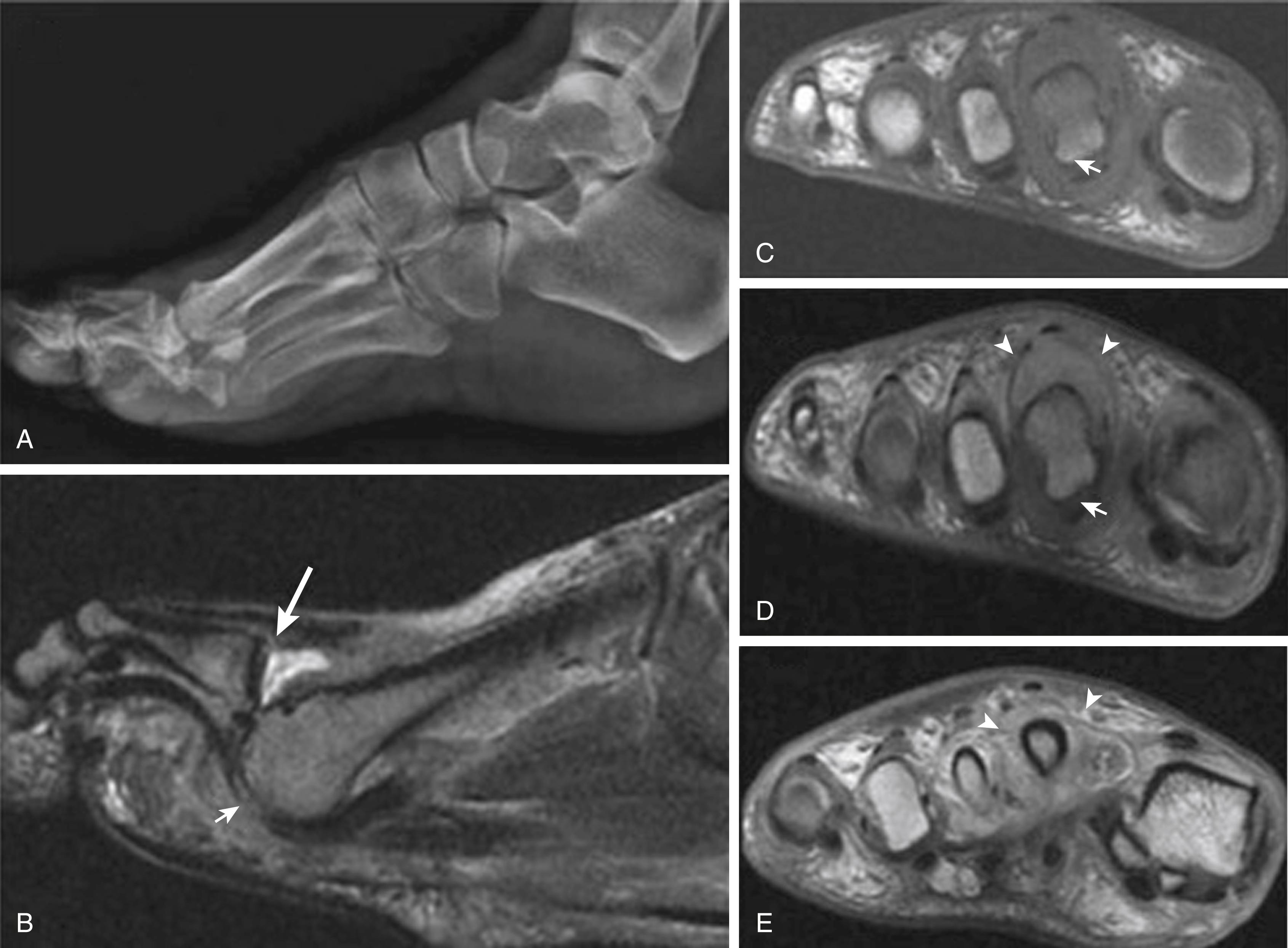
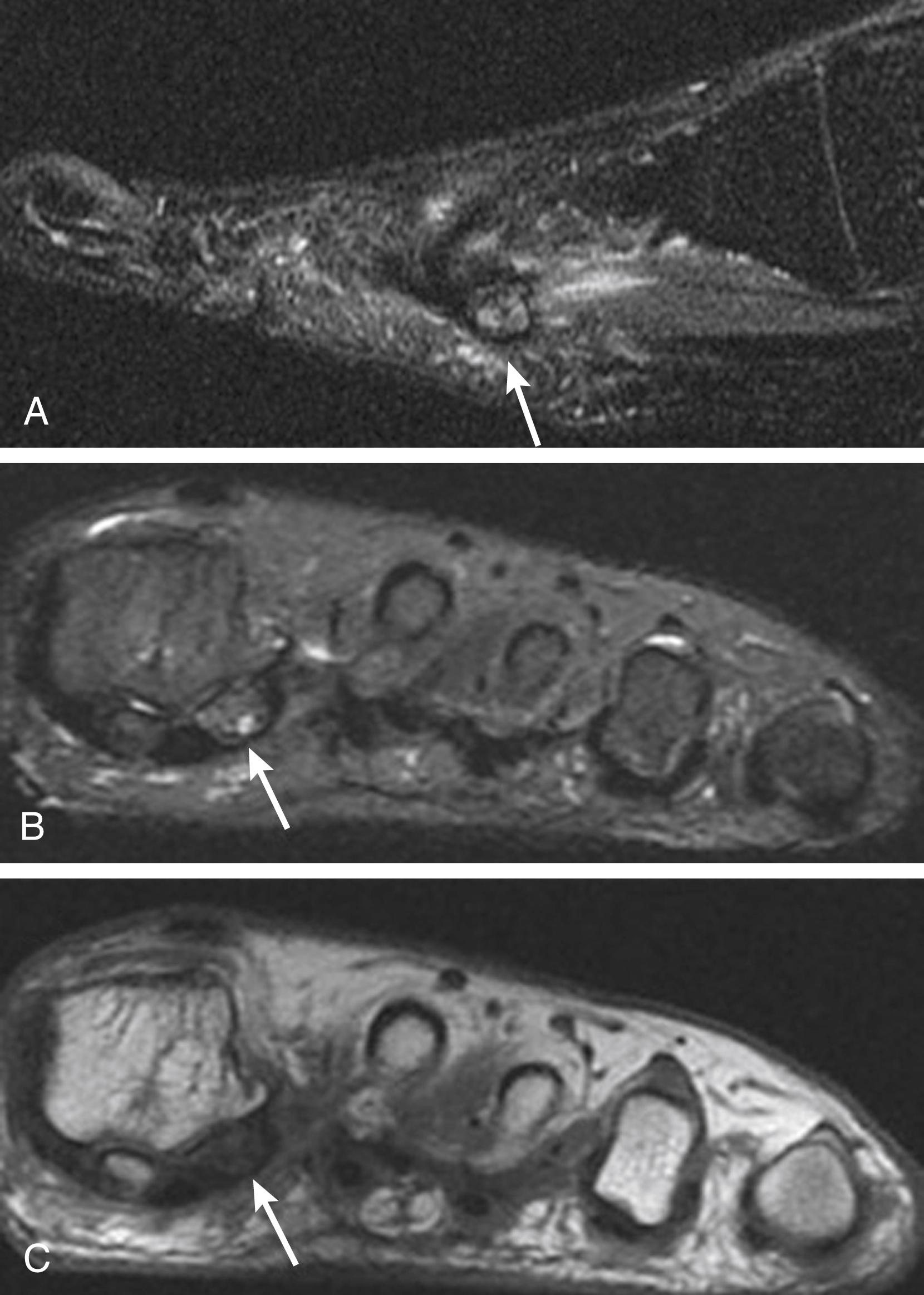
Become a Clinical Tree membership for Full access and enjoy Unlimited articles
If you are a member. Log in here